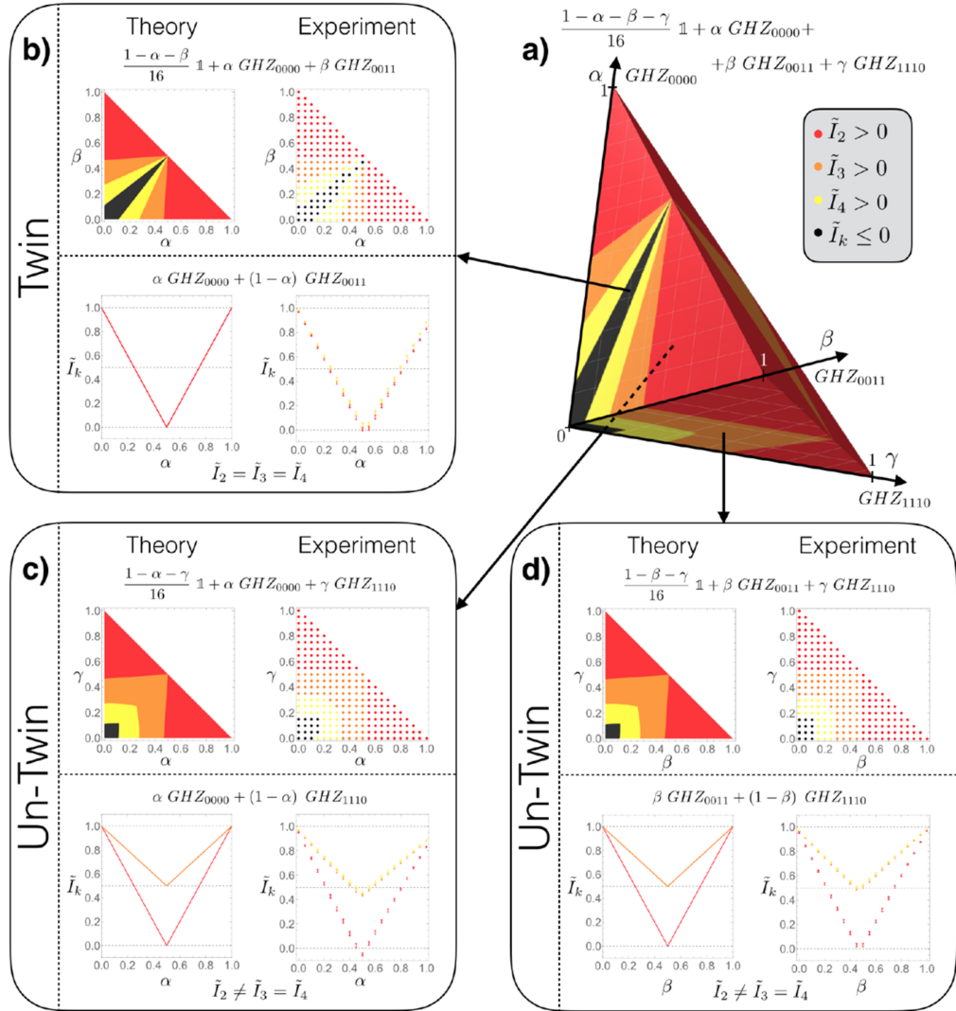In a joint collaboration between theory (Vienna) and experiment (Rome) researchers studied the geomety of mixtures of GHZ states published in Scientific Reports. Mixing GHZ states unmasks different entanglement features based on their particular local geometrical connectedness. Exploiting these local geometrical relations provides a toolbox for generating specific types of multipartite entanglement, each providing different benefits in outperforming classical devices. Controlling the different types of entanglement properties of the finally generated state will be the key for interesting applications. Alternatively, from the theoretical perspective it is also interesting to ask what is the minimum number of pure states in a convex combination needed for a state to have specific properties concerning entanglement.
This work was based on our theoretical studies on the magic simplex where a ``Schön ist so ein Ringelspiel (famous Viennese song by Hermann Leopoldi about the pleasure of using the Carousel in the Viennese Prater)'' (Merry Go Round) was found (Phys.Lett. A). And on our HMGH-framework (Phys.Rev.Lett.) that provided the experimental tool to distinguish different types of multipartite entanglement.

